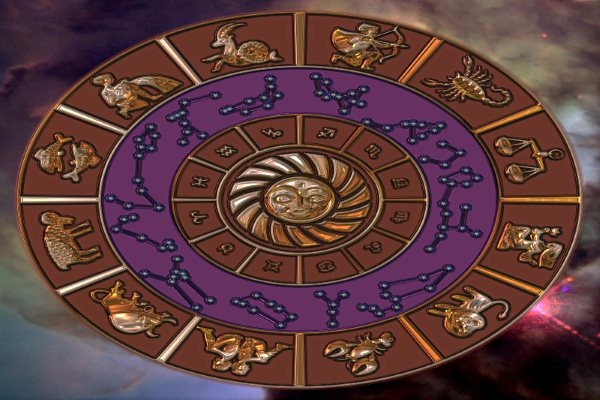By: Bruce Scofield
Critics of astrology often argue that “astrologers,” a loosely defined group that includes dabblers, serious students, and practicing astrologers, are uniformed in regard to the existence of two zodiacs.
They may be right about the first group, but certainly not about the second and third. For the past 40 years, at least, most serious astrology books have drawn attention to the tropical-sidereal debate when the topic of the zodiac is discussed. There is no excuse for anyone who considers themselves an “astrologer” today to be ignorant of the existence of this complex issue.
However, exactly what are the differences between each zodiac, especially in regard to symbolic delineation purposes, is a topic that has not been adequately addressed. And so we are still left with a deep and unresolved controversy that haunts our field of study.
The great astrologer Johannes Kepler had a solution to this problem – he basically abandoned the zodiac and built his astrological system around the aspects between the planets. He thought that the zodiac itself was merely a human geometry exercise and primarily served to aid the memory of astrologers as they computed aspects in their heads. To the argument that the zodiac reflects the cycle of the seasons he said “there is no experiment that proves that the twelve signs are divided up into various qualities – especially in view of the fact that in the other (i.e. southern) temperate zone those signs that make us warm would have to be considered cold, and visa versa.” (1) Another early scientific astrologer, John Goad, followed Kepler in this regard. In the late 17th century he published a massive study of astro-meteorology in which signs of the zodiac were basically ignored. But the tradition of the tropical zodiac persisted and Kepler’s reforms were forgotten.
In the late 60’s I discovered that there was a movement in Western astrology that was concerned with reinstating the sidereal zodiac. The Irish astrologer Cyril Fagan began the modern “Siderealist” tradition in the late 1940’s with a number of publications that argued strongly for the role of fixed stars in the establishment of the zodiacal framework. He attracted a small group of articulate followers that included Brig. R.C. Firebrace, Donald Bradley, and Rupert Gleadow, all of whom died in 1974, four years after Fagan’s death. Bradley (a.k.a. Garth Allen) was a serious researcher who published a number of scientific studies of astrology which proved to his satisfaction that the fixed stars Aldebaran and Antares were positioned at 15 degrees of Taurus and Scorpio, respectively. This put the fixed star Spica at 29 degrees of Virgo. Stars that are said to anchor the sidereal zodiac are called fiducial stars.(2)
Probably the best astrology magazine of the time (and still so today) “American Astrology,” had long supported sidereal astrology and frequently ran articles by leading siderealists. As a reader I was intrigued. So I looked into this branch of astrology, reading Fagan, Gleadow, and then tackling Donald Bradley’s book on solar and lunar returns. I went right to work; hand-calculating solar returns, quarterly-returns, and demi-returns in both the tropical and sidereal zodiac. Bradley’s methodology didn’t involve any sign interpretation, it was based primarily on the angularity of planets at the time of the return. So the truth was you really didn’t need to convert from the tropical zodiac to the sidereal zodiac, you just needed to account for precession. One thing I found from doing all these returns in both zodiacs was that they both worked – but not necessarily at the same time. I closely followed a series of lunar returns in both zodiacs for several years. Most of the time the tropical zodiac return seemed to be more descriptive of events than the sidereal. But every once in a while, it was the sidereal that clearly symbolized the events of the time. The confusion deepened.
A few years later, at around 11 PM, I ran into to the late A.H. Blackwell, a well-known siderealist, while he was speed-walking a tight arc around Rob Hand’s house. Blackwell, who resembled Groucho Marx in some ways, was circuiting the house about every 20 seconds when I caught up to him. We quickly became friends. A.H., as he was known to many, thought of himself as having a stellium in Libra, in the sidereal zodiac, that is. This stellium was in tropical Scorpio, however. Although I strained my brain in trying, I could never see anything remotely Libran in him. A.H’s unfortunate and untimely end by cancer was preceded by events like a family member’s suicide and very serious martial woes. The battle over his legacy continues to this day. I still can’t see any Libra, as I understand its symbolism, here.
Around this same time I also began to explore what was then called Hindu astrology. We all know that this astrological system (Vedic) uses one or another version of the sidereal zodiac, the slight differences between them being measured by what is called the ayanamsha, the gap between the tropical and sidereal zodiac. The twelve sidereal-based zodiacal signs (rasis) used in this system are not particularly important overall, and they serve more as a background reference plane for planets than as a matrix for personality distinctions. The houses are important, however, but house boundaries between planets will remain roughly constant in a timed birth chart no matter which zodiac is employed. After reading a number of texts on the subject it became apparent to me that Hindu astrology was a tradition that was not concerned with extracting psychological insights from birth charts, it was more event-oriented.
What’s really going on here?
Given the above, that both Western and Eastern advocates of the sidereal zodiac did not display any brilliance in the subtleties and dynamics of human personality, I moved on to a study of Dane Rudhyar’s ideas on astrology. I was fortunate in even getting to hear him speak in person a year or two before he died. In my opinion, Rudhyar remains the most important astrologer of the 20th century. He had something intelligent to say on just about every issue in astrology, including the sidereal-tropical problem. Rudhyar wrote that the sidereal zodiac, the zodiac of constellations, was a product of the myth-making faculty of the human psyche. These constellations, groupings of stars, are a remnant of an earlier age that saw the rise of agriculture, but they are not relevant to modern life. He felt it was unfortunate that both zodiacs use the same names for their 12-fold division of the yearly circle, and he regarded the tropical zodiac as being the proper framework on which to assess the evolution of mankind. Further, he thought the so-called precession of the zodiac should be viewed in an entirely different way – the constellations should be conceived as moving forward through the zodiac, just as the planets do. For example, today the constellation Pisces could be said to be advancing through the sign Aries.(3)
For many years I asked “why is the notion persist that the sidereal signs of the zodiac actually work separately from those of the tropical zodiac?” My answer has to do with my insight that most people are not able to think clearly or cleanly about astrological typology, i.e. personality differences. On the other hand, I figured that any astrological system could survive as long as it delivered some goods – i.e. working forecasting methodologies which have nothing to do with signs. Here’s what I mean in more detail. Consider studies, conducted by skeptical enquirers, in which a group of students are given the same personality delineation and are independently asked to comment on how accurate it is. In general, most report that much of the delineation is true for them. The students, like 99% of the population, have no training in self-knowledge, so they don’t really know how to think about themselves and critically analyze an alleged self-description. There are other variations of this loaded anti-astrology experiment that also point to the broad-based lack of psychological insight in our population. (In fact, if anything, that’s what these studies really prove, contrary to skeptic’s claims that they disprove astrology.) Another observation of mine is that many people who are good at technical astrology are generally not as strong in handling personality delineations, and vice versa. Which relates to the fact that the people I met who were into sidereal astrology were very technical astrologers. So for years I used what I perceived to be a general lack of self-knowledge and penetrating psychological insight among siderealists as a convenient rationale for explaining how the tropical-sidereal debate could go on for so long.
Today I still think most people don’t know how to look at themselves in a mirror – so to speak. And I also think that these people should not be allowed to participate in any astrological study that tests the ability to slice personality into thin sections – like the tropical-sidereal debate. So how do we proceed? There are undoubtedly a reasonable number of leading astrologers, some well-known, others not, who have excellent insight into the human condition. It’s among this group, if such a group can be sorted out properly, that some kind of study pitting the two zodiacs against each other might be conducted. Oh my, does this smack of elitism! (Then again, not everyone can play the guitar like Hendrix.) Interestingly, among some in the field of astrology, the issue is already settled. I’ll bet you can find astrologers who say they know exactly what the difference between the two zodiacs is. I would wonder about these claims – are they basically pushing their agenda by sheer bluff like some priest preaching moral laws based entirely on ancient writings? Who could possibly know with any certainty that the sidereal zodiac is a code for spiritual development or that the tropical zodiac is the key to only that which happens to us on Earth? Does the sidereal zodiac work better for gurus than the tropical? Should we only use the tropical zodiac on the mentally disabled? If I take LSD and raise my consciousness to a “spiritual” level, will I begin to respond to the sidereal zodiac? This is an experiment that I’ve been meaning to conduct for some time.
Well, I still don’t have any authorative word on this thorny subject, thank Uranus. In general though, I agree with Dane Rudhyar’s thoughts on the subject. But there are also the studies that have been done. Donald Bradley’s work shouldn’t be ignored, and it supports a fixed-star oriented kind of astrological influence. Precession correction seems to work sometimes in return charts, for me at least. Rob Hand long ago suggested that precession correction might be applied to transits also. But precession correction is one thing, a separate sidereal zodiac with delineations for the 12 signs closely resembling those for the tropical zodiac (and using the same names) is a much bigger problem, however solvable on an individual basis through the magic of Mercury and Neptune the case may be. Personally, I suppose I can afford to let this side of the problem slide and get on with my life. My natal Sun is in late Cancer, so I’m a Cancer no matter which way you look at it.
(originally published in The Mountain Astrologer, 2001)
Footnotes:
- Negus, Ken, trans. Kepler’s Astrology Excerpts. Princeton, NJ: Eucopia. 1987, p.11.
- See Fagan, Cyril. Astrological Origins. St. Paul, MN: Llewellyn Publications. 1971, and The Solunars Handbook. Tucson, AZ: Clancy Publications. 1970. Also see Gleadow, Rupert. The Origin of the Zodiac. New York: Castle Books, 1968.
- See Rudhyar, Dane. Birth Patterns for a New Humanity. The Netherlands: Servire-Wassenaar. 1969. pp. 85 ff. (note: this book was later reprinted under the title “Astrological Timing.”)



